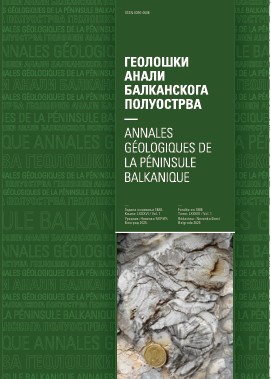The origin of lead and sulfur in Tulare ore field, Lece magmatic complex, SE Serbia
Abstract
Lece magmatic complex in SE Serbia, part of the Serbo-Macedonian Metallogenic Province, isone of the most promising zones for lead, zinc and precious metals for the country. This complex was formedas a result of the post-collisional magmatic activity that lasted from Oligocene to Miocene. This study bringsnew lead and sulphur isotope data with an aim to constrain the origin of mineralizing fluids and to estimatethe temperature of their formation. Galena from the Bakrenjača locality shows high 207Pb/204Pb values imply-ing that the lead was dominantly derived from the upper continental crustal geochemical reservoir which wasprobably recycled within the mantle and erupted during Tertiary post-collisional magmatism. Sulfur isotopecomposition of galena, sphalerite and pyrite show overlapping δ34S values in the range between 0 and 3‰ indicating a mantle origin of sulphur. Sulfur isotopes were also used to estimate the temperature under whichthe minerals were deposited forming a complex of veins. The calculated temperature is around 350 °C. Sincethis temperature is too high for epithermal deposits, it is probable that the associated minerals weren’t deposited in isotopic equilibrium and other methods should be conducted for more precise temperature evaluation.
Copyright (c) 2018 Geološki anali Balkanskoga poluostrva

This work is licensed under a Creative Commons Attribution 4.0 International License.










